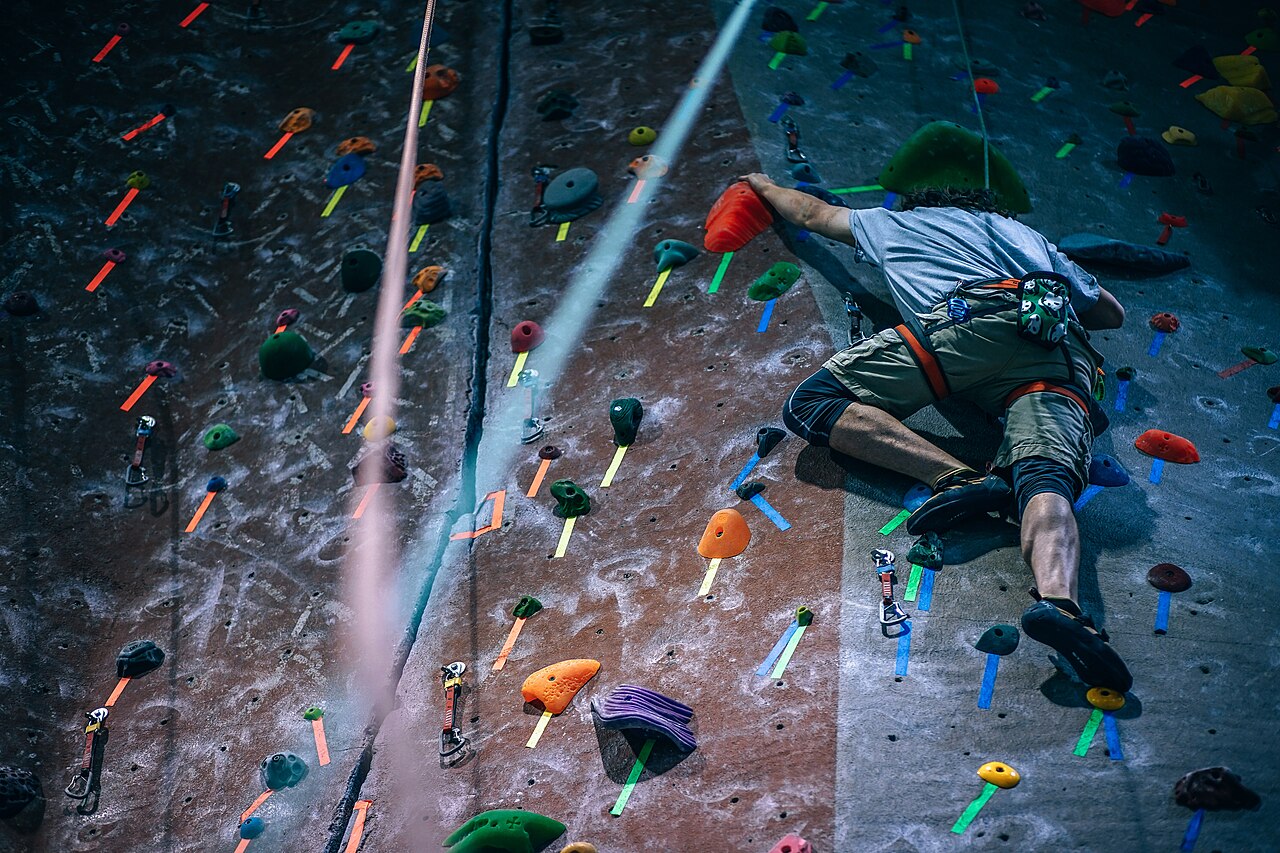For rock climbing enthusiasts who dream of conquering majestic outdoor cliffs and boulders, indoor training facilities serve as crucial stepping stones to develop the necessary skills, strength, and technique. These specialized gyms offer controlled environments where climbers can safely push their limits, practice specific movements, and build the physical and mental resilience required for outdoor adventures.
Whether you’re a beginner looking to transition to real rock or an experienced climber maintaining fitness during off-seasons, the right indoor facility can dramatically accelerate your progression toward outdoor climbing goals.
Why Train Indoors for Outdoor Climbing
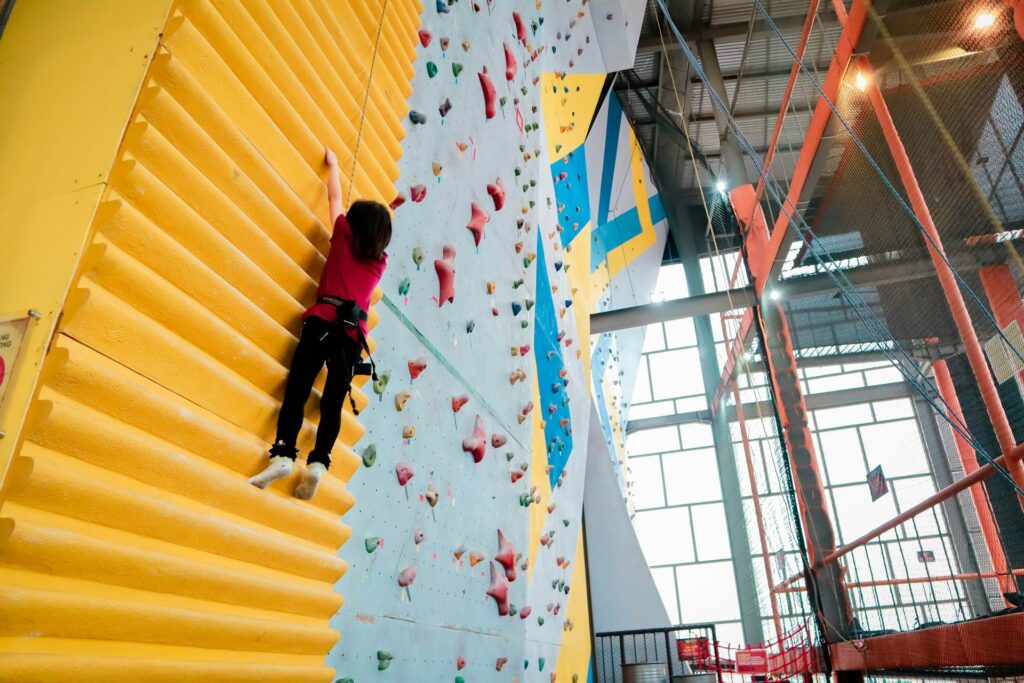
Indoor climbing gyms provide controlled environments where climbers can systematically work on weaknesses and build specific strengths needed for outdoor adventures. These facilities allow year-round training regardless of weather conditions, offering consistent opportunities to maintain fitness during seasons when outdoor climbing might be impossible.
Moreover, indoor gyms facilitate focused training on particular movement patterns, holds, and angles that climbers might encounter on real rock, but in a setting where falls are safer and feedback is immediate. The structured progression available in gyms—from color-coded routes to specific training equipment—helps climbers develop the fundamental skills and conditioning that transfer directly to outdoor performance.
Earth Treks (Multiple Locations)
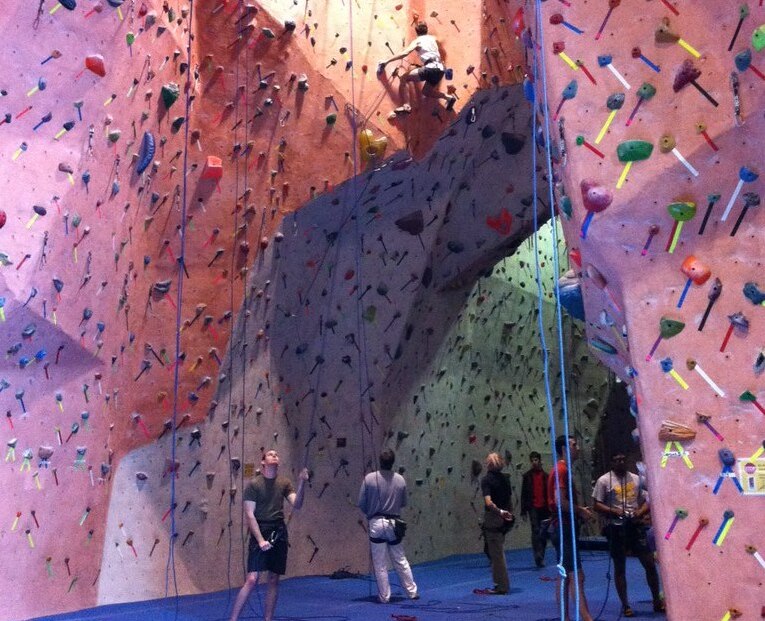
Earth Treks has established itself as one of North America’s premier climbing gym chains, with massive facilities in Maryland, Virginia, Colorado, and beyond. Their flagship location in Englewood, Colorado boasts an impressive 53,000 square feet of climbing surface with walls reaching 55 feet high, making it one of the largest indoor climbing facilities in the country. What sets Earth Treks apart for outdoor-focused climbers is their intentional route setting that mimics outdoor climbing styles, including crack systems, slab sections, and overhangs that replicate famous outdoor areas.
The gyms offer comprehensive training areas with campus boards, hangboards, moonboards, and tension boards specifically designed to build the finger strength and power essential for outdoor climbing. Their experienced staff often includes accomplished outdoor climbers who provide specialized coaching focused on outdoor technique and mental preparation.
Brooklyn Boulders (Various Cities)
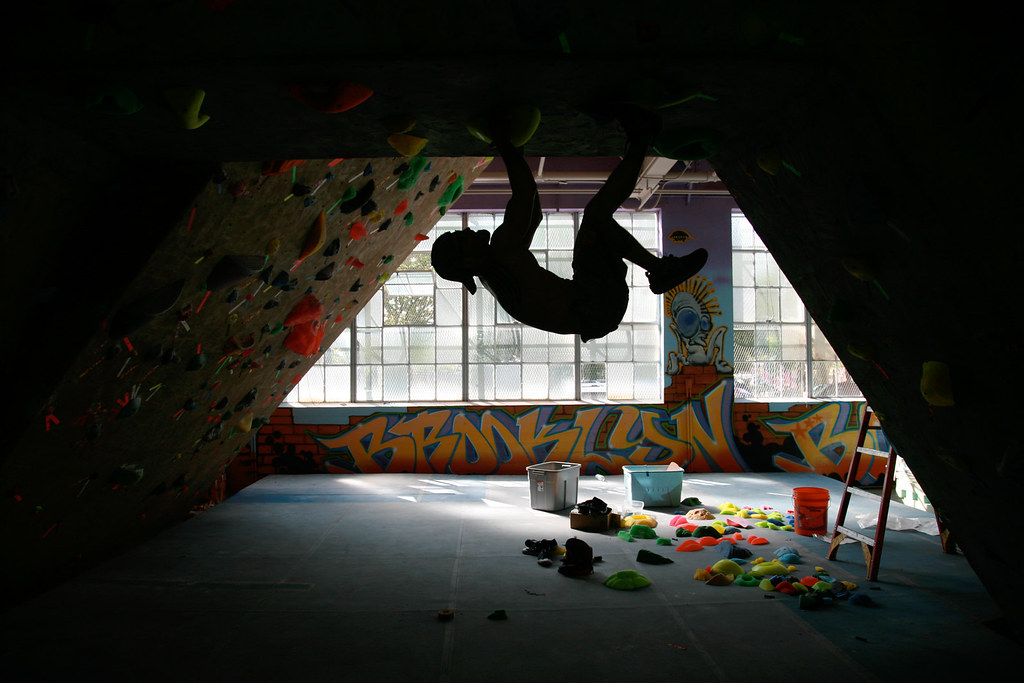
Brooklyn Boulders has expanded beyond its New York origins to establish innovative climbing communities in several major urban centers. These facilities stand out for their commitment to fostering an adventure-minded community through diverse programming that specifically prepares climbers for outdoor experiences. Their route setting philosophy emphasizes technical movements and problem-solving skills that translate directly to outdoor climbing challenges.
Brooklyn Boulders’ training spaces feature carefully designed systems boards that allow climbers to practice sequences similar to those found at popular outdoor destinations. The company regularly organizes outdoor climbing trips and clinics that help members bridge the gap between gym training and real rock applications, making it more than just a training facility but a gateway to authentic climbing adventures.
The Front Climbing Club (Utah)
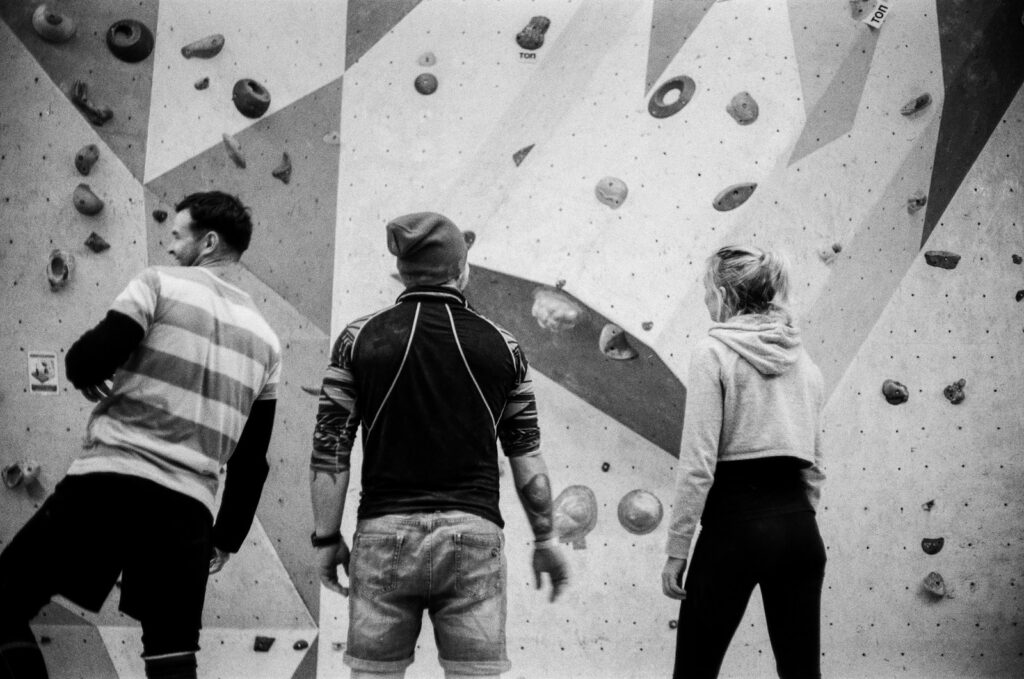
The Front Climbing Club, with locations in Salt Lake City and Ogden, sits at the doorstep of some of America’s most renowned climbing destinations, which profoundly influences its training approach. The gym’s route setters, many of whom are accomplished outdoor climbers, create problems specifically designed to prepare members for Utah’s famous desert towers, limestone pockets, and quartzite crimps.
What truly distinguishes The Front is its comprehensive outdoor education program that includes clinics on anchor building, traditional climbing techniques, and wilderness first aid – critical skills for safe outdoor adventures. Their facilities feature dedicated training areas with outdoor-specific equipment like crack machines that simulate the famous splitter cracks of nearby Indian Creek. The proximity to world-class outdoor climbing means The Front’s community includes numerous professional climbers who often share insights and workshops on transitioning gym skills to outdoor success.
Momentum Indoor Climbing (Utah/Texas)
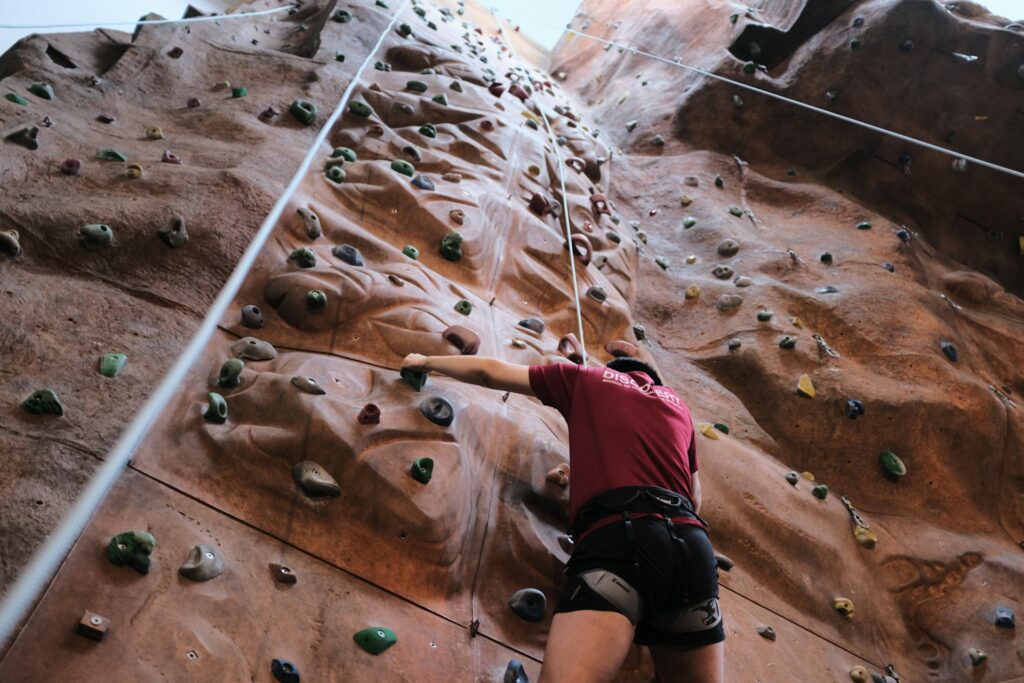
Momentum Indoor Climbing has built its reputation on developing world-class climbers through thoughtfully designed facilities that bridge indoor training and outdoor performance. Their gyms feature carefully crafted terrain designed to teach specific movement skills essential for outdoor climbing success, including technical footwork sections and balance-focused problems. Momentum’s “Outdoor Academy” program stands out as one of the most comprehensive indoor-to-outdoor transition curriculums available, offering structured courses covering everything from gear management to advanced outdoor technique.
The training areas incorporate innovative features like adjustable-angle walls that can simulate specific outdoor projects climbers might be preparing for. Founded by accomplished outdoor climbers, Momentum maintains a philosophy that indoor climbing should directly serve outdoor adventures rather than exist as a separate discipline.
Sender One (California)
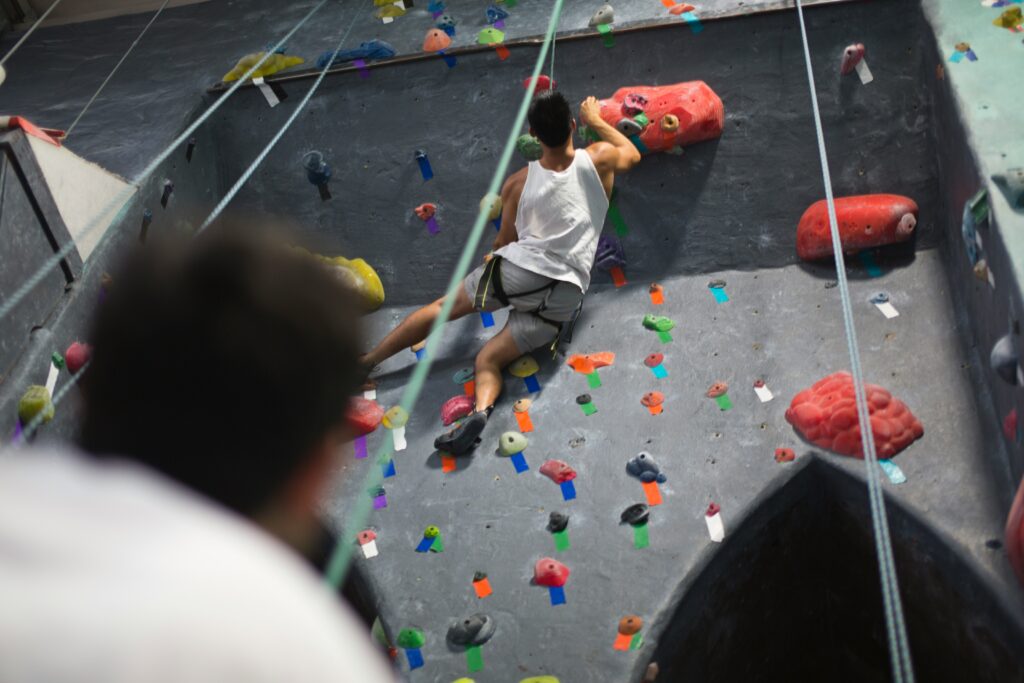
Sender One, with locations across Southern California, has created training environments specifically designed for climbers aspiring to tackle the diverse outdoor climbing the region offers. Their facilities feature walls with textures and angles that deliberately mimic the polished granite of nearby Joshua Tree and the volcanic formations of the Eastern Sierra. What makes Sender One particularly valuable for outdoor-focused climbers is their comprehensive “Road to Outdoor Climbing” program that systematically builds the specific skills needed for safe and successful outdoor adventures.
Their training areas include specialized equipment rarely found in standard gyms, such as crack machines and compression training tools designed to prepare climbers for the unique challenges of outdoor environments. The gym’s strong relationship with local outdoor advocacy groups also ensures that members develop not just climbing skills but also education about conservation and responsible outdoor climbing ethics.
Vertical World (Seattle)
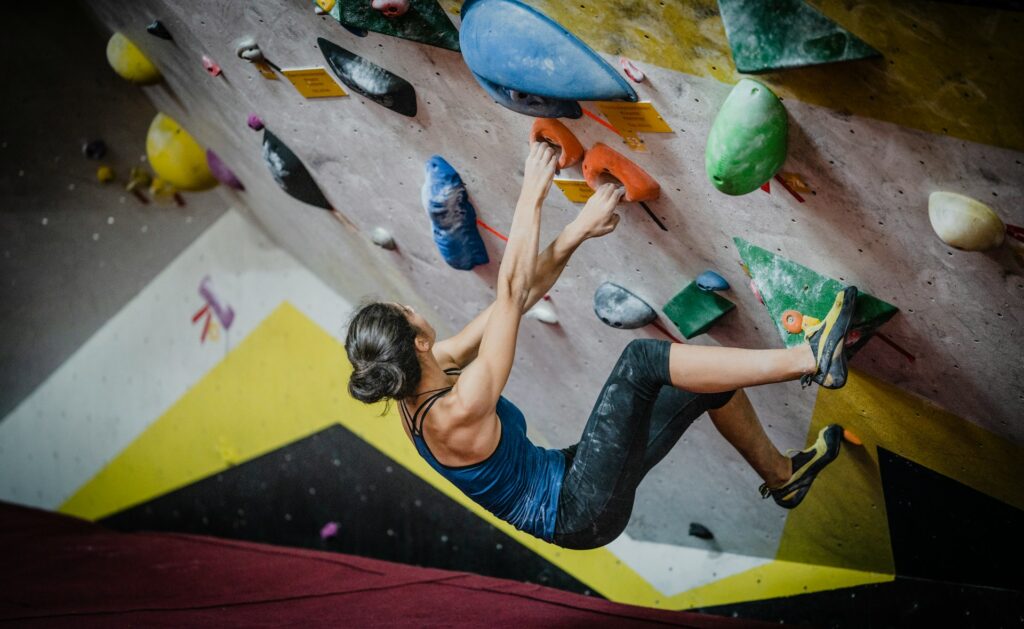
Vertical World holds the distinction of being America’s first climbing gym, established in 1987, and has evolved into a premier training ground for Pacific Northwest climbers preparing for the region’s challenging outdoor terrain. Their Seattle facility features walls designed specifically to train climbers for the technical basalt columns of Frenchman Coulee and the granite cracks of Index – local crags that demand specific skill sets.
The gym’s “Alpine Fitness” program stands apart from standard training offerings by focusing on the endurance and strength needed for the long multi-pitch routes common in the Cascades. Their experienced coaching staff includes guides and professional climbers who provide specialized training for specific outdoor objectives, from alpine granite to sport climbing projects. Vertical World’s deep roots in the development of American climbing culture give it a unique perspective on bridging indoor training with authentic outdoor adventures.
Touchstone Climbing (California)
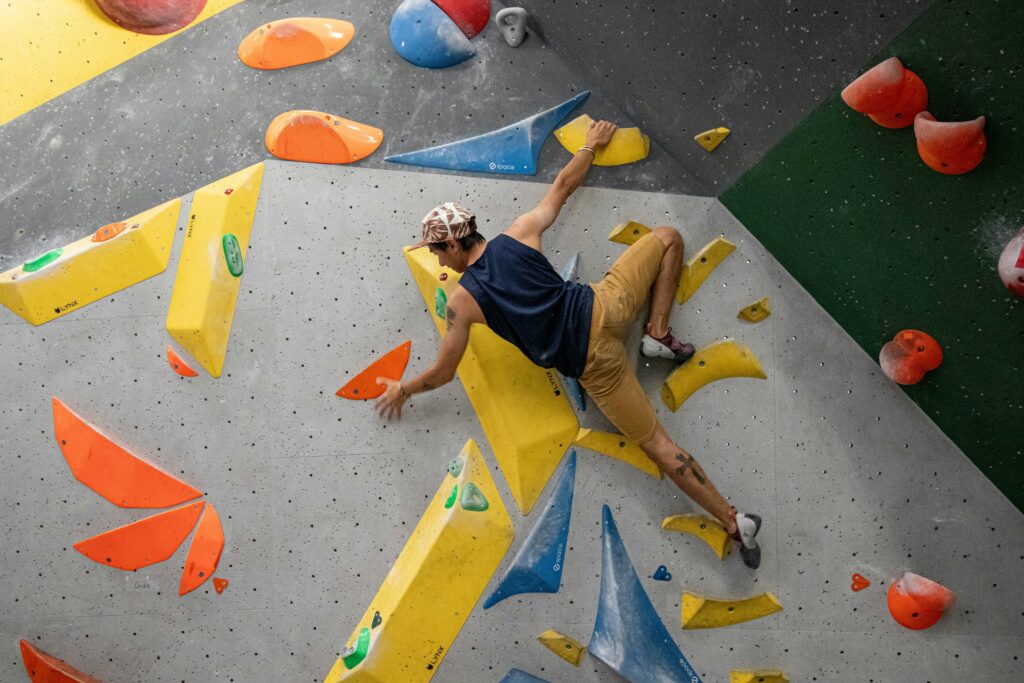
Touchstone Climbing operates a network of gyms across California that serve as training hubs for climbers preparing for the state’s world-famous outdoor destinations. Each facility features terrain designed to develop skills for specific nearby crags – Berkeley Ironworks prepares climbers for Yosemite’s technical face climbing, while LA Boulders focuses on skills needed for Black Mountain and Joshua Tree.
Their “Outdoor Climbing School” provides structured instruction bridging indoor skills to outdoor application, with courses covering technical rope skills, traditional gear placement, and outdoor-specific movement techniques. Touchstone’s training areas feature specialized equipment like system boards programmed with sequences that mimic classic outdoor problems from California’s legendary climbing areas. Their community events regularly include clinics led by professional climbers who share specific training protocols they use to prepare for challenging outdoor projects.
First Ascent (Chicago)
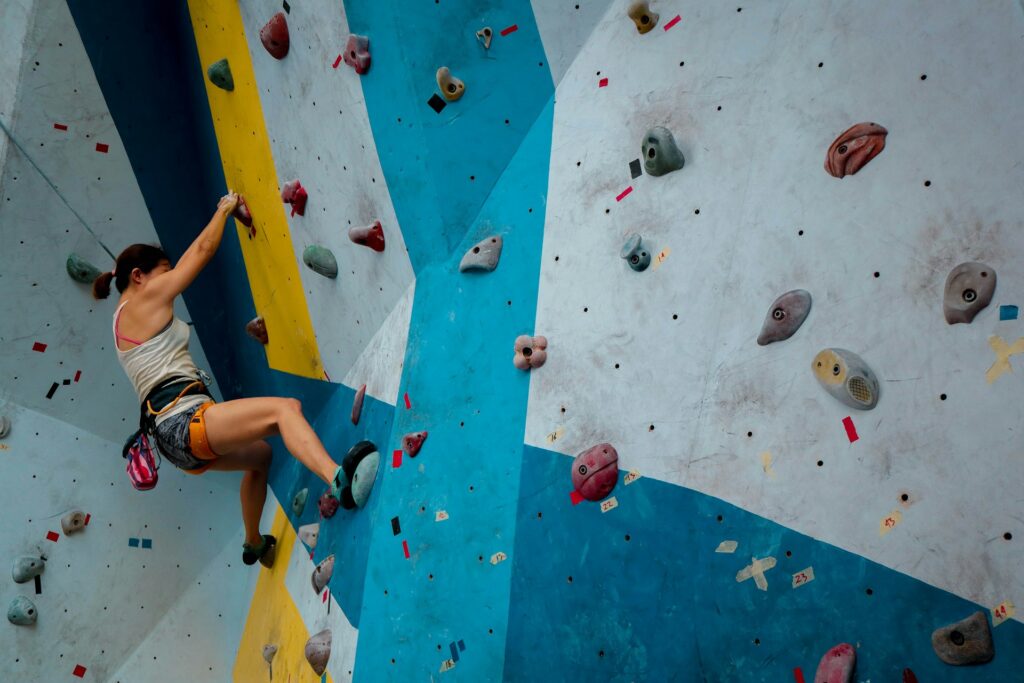
First Ascent has transformed the Midwest climbing scene by creating sophisticated training environments for climbers who must prepare intensively before traveling to distant outdoor climbing destinations. Despite Chicago’s distance from natural cliffs, First Ascent’s facilities feature remarkably realistic terrain designed to develop transferable skills for outdoor climbing areas. Their innovative “Destination Training” programs create specialized workout regimens for members preparing for specific climbing trips, tailoring strength and technique development to the exact demands of their target climbing area.
The gym’s training spaces include advanced tools like Kilter Boards and MoonBoards that allow precise replication of outdoor movement patterns and hold types. First Ascent’s community approach includes organizing regular climbing trips that provide coached transitions from gym training to real rock application, making it an essential resource for Midwest climbers with outdoor ambitions.
The Cliffs (New York)
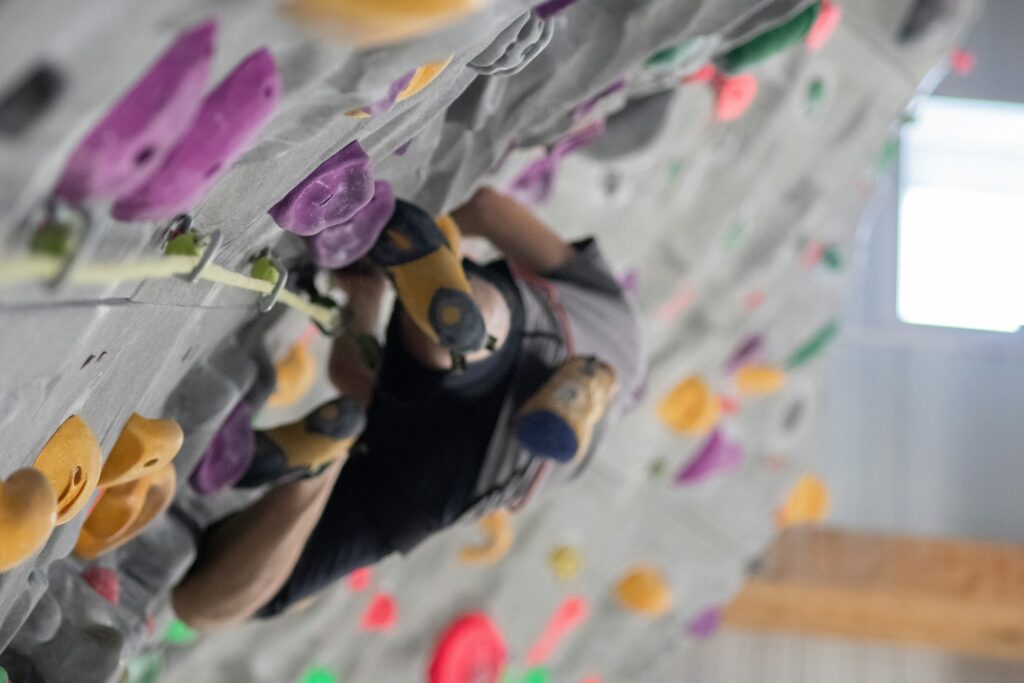
The Cliffs has established multiple facilities across New York that serve the city’s growing population of climbers preparing for weekend adventures in the Gunks, Adirondacks, and beyond. Their route setting philosophy emphasizes technical, deliberate movement that transfers effectively to the region’s notoriously sandbagged traditional climbing areas. What distinguishes The Cliffs for outdoor-focused climbers is their comprehensive “Outdoor Skills” curriculum that methodically builds competence in crucial areas like gear placement, anchor building, and outdoor problem-solving.
Their training areas feature specialized equipment designed to develop the particular grip strengths needed for the quartz conglomerate of the Gunks and the anorthosite of the Adirondacks. The Cliffs’ strong relationships with local guiding services creates clear pathways for members to apply their indoor training in authentic outdoor settings with professional supervision.
Stone Summit (Atlanta)
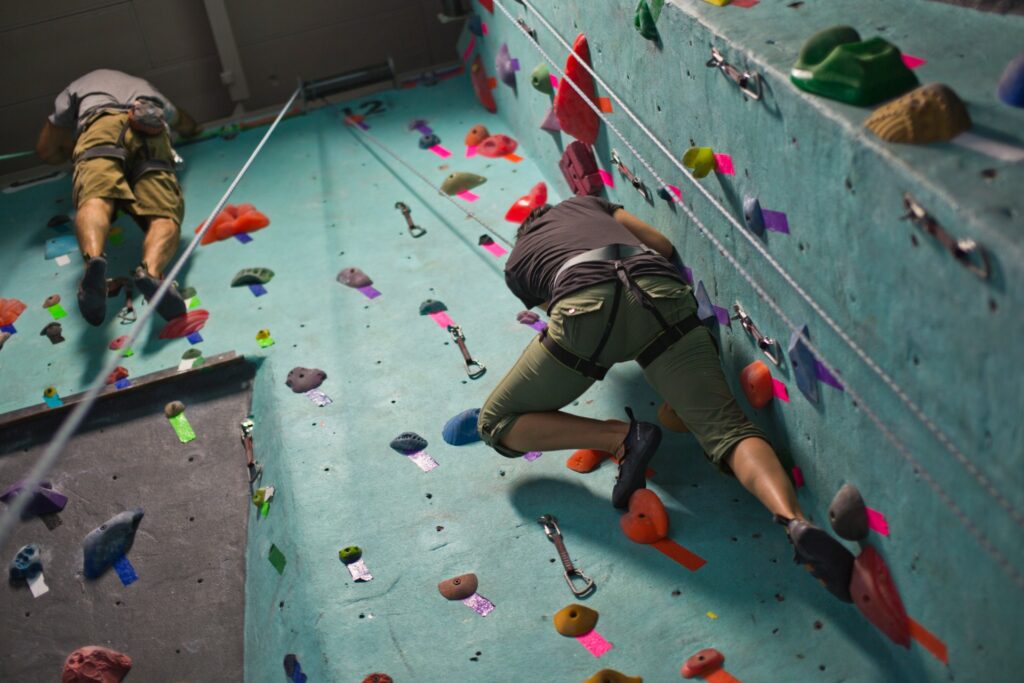
Stone Summit operates some of the Southeast’s largest climbing facilities, providing crucial training grounds for climbers preparing for the region’s sandstone boulders and quartzite cliffs. Their massive Atlanta facility features walls reaching 60 feet high, allowing climbers to develop the endurance needed for classic routes at nearby areas like Tennessee Wall and Sandrock. Stone Summit’s “Outdoor Preparation Series” stands out for its region-specific focus, teaching techniques particularly relevant to southeastern climbing styles, including technical slab movement and friction-dependent footwork.
Their training areas include specialized friction walls that help climbers adapt to the region’s notoriously slick sandstone when conditions are less than ideal. The gym’s proximity to outdoor climbing destinations enables them to organize frequent guided transitions from gym to crag, with coaches providing real-time feedback on applying indoor training to outdoor challenges.
Planet Granite (West Coast)
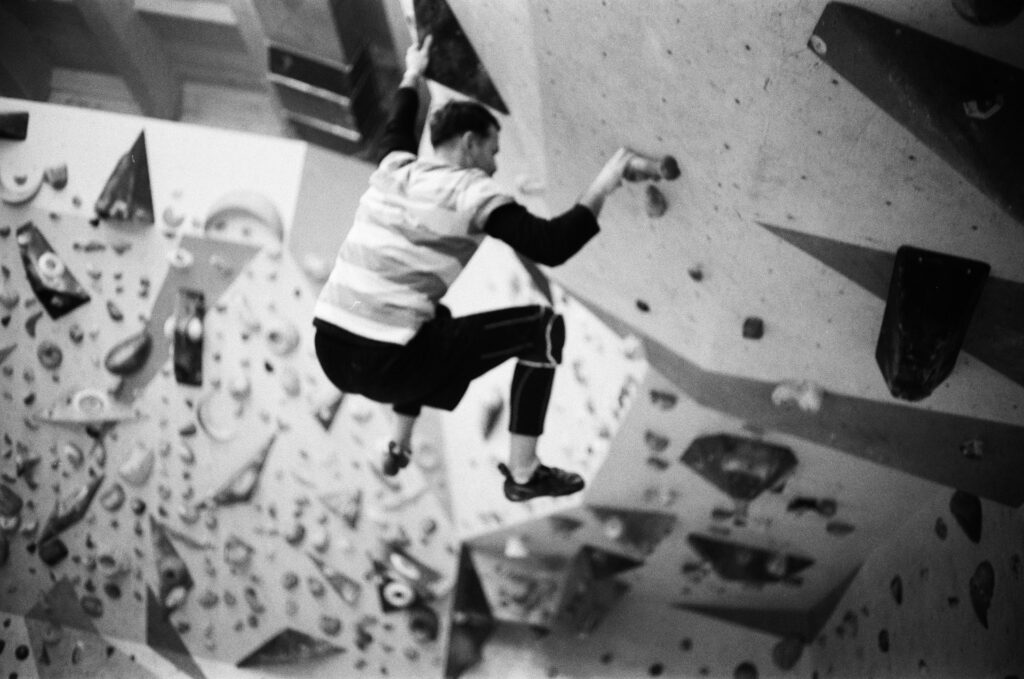
Planet Granite’s facilities along the West Coast offer sophisticated training environments designed by and for climbers with serious outdoor ambitions. Their Portland, San Francisco, and Los Angeles locations feature terrain specifically created to develop skills for iconic western climbing areas from Smith Rock to Joshua Tree. What sets Planet Granite apart is their “Outdoor Development Track,” a structured program that progressively builds the specific strength, technique, and mental skills needed for outdoor climbing success.
Their comprehensive training areas include specialized equipment like adjustable crack systems that can be modified to prepare for specific outdoor projects. Planet Granite’s professional coaching staff includes accomplished outdoor climbers who provide targeted training plans for members working toward specific outdoor goals, whether it’s a single challenging route or an expedition to remote climbing areas.
Essential Training Equipment for Outdoor Preparation
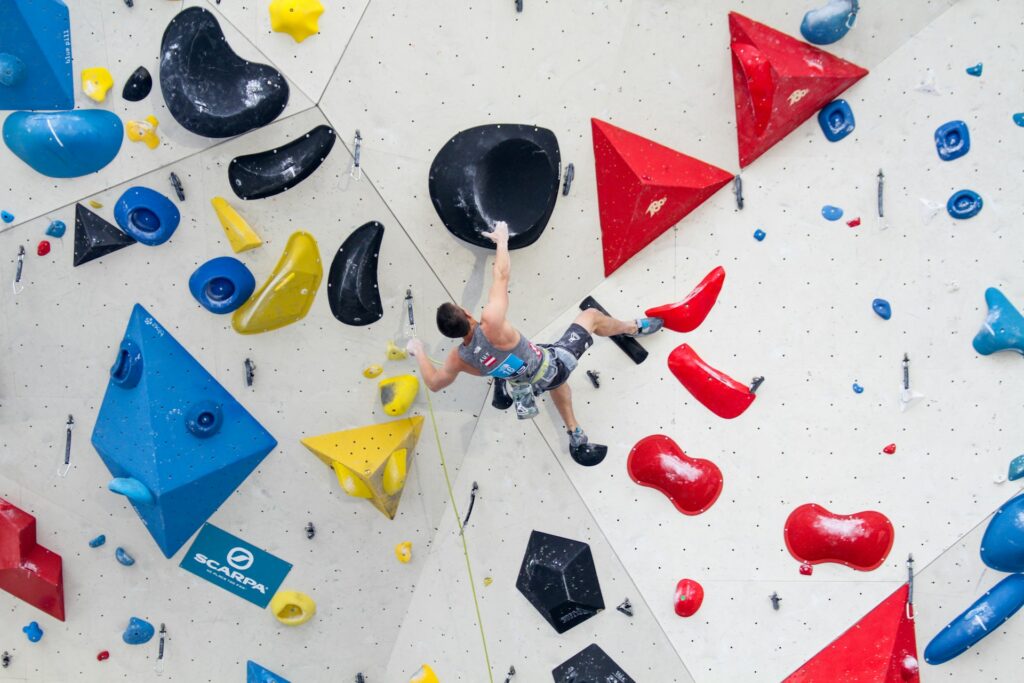
When evaluating a gym’s suitability for outdoor preparation, climbers should look for specific training tools that develop transferable skills. Hangboards and campus boards remain fundamental for building the finger strength essential for outdoor climbing’s typically smaller holds and longer routes. More advanced facilities now incorporate adjustable systems walls like Moonboards, Kilter Boards, and Tension Boards that allow climbers to train specific movement patterns they’ll encounter outdoors.
Specialized crack machines that simulate different hand jam sizes have become increasingly common in gyms catering to traditional climbers preparing for areas like Indian Creek or Yosemite. The most comprehensive training facilities also include endurance-focused equipment like treadwalls or circuits designed to build the stamina needed for multi-pitch climbing and long approaches.
Bridging the Indoor-Outdoor Gap: Programs to Look For
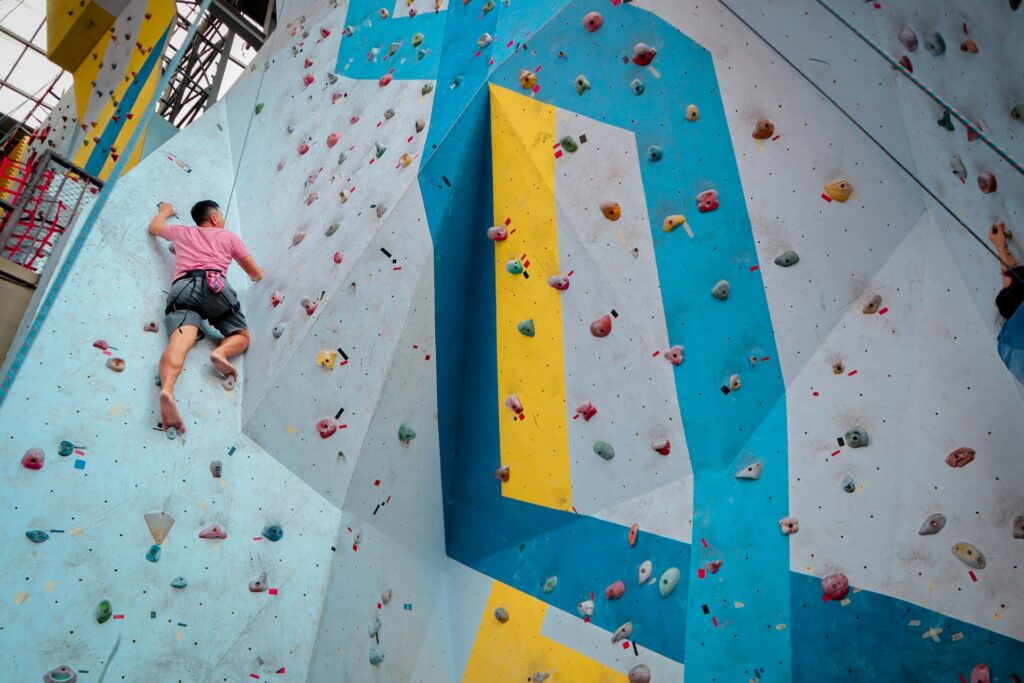
The most effective gyms for outdoor preparation offer structured programs specifically designed to transfer indoor skills to outdoor environments. Look for facilities with formal “gym-to-crag” courses that address the significant differences between indoor and outdoor climbing, including risk management, gear placement, and environmental considerations. The best programs incorporate graduated outdoor experiences, beginning with coached sessions at accessible crags and progressing to more challenging environments as skills develop.
Beyond technical skills, valuable training programs address the mental aspects of outdoor climbing, including managing exposure, making safety decisions, and developing the patience often required in outdoor settings. Gyms with strong connections to local guiding services often provide the most seamless transition from controlled indoor training to authentic outdoor experiences with professional support.
Creating Your Own Outdoor-Focused Training Plan
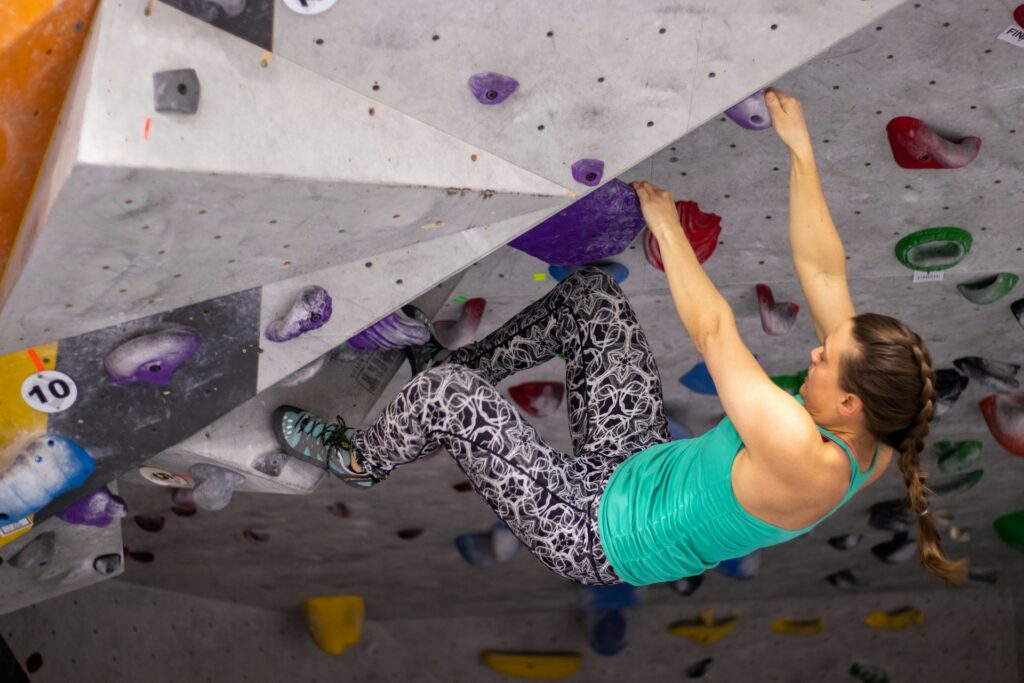
Even if your local gym isn’t specifically designed for outdoor preparation, you can craft a training regimen that builds outdoor-relevant skills. Focus on endurance by climbing multiple routes consecutively without rest, simulating the sustained nature of many outdoor climbs. Incorporate deliberate practice of outdoor-specific techniques like precise footwork, efficient resting positions, and reading routes from the ground.
Supplement climbing with targeted strength training for antagonist muscles that prevent injuries common in outdoor settings, particularly shoulder stability exercises. Perhaps most importantly, find climbing partners with outdoor experience who can provide feedback on aspects of your technique that will transfer well to real rock and identify indoor habits that might create challenges outdoors.
Conclusion
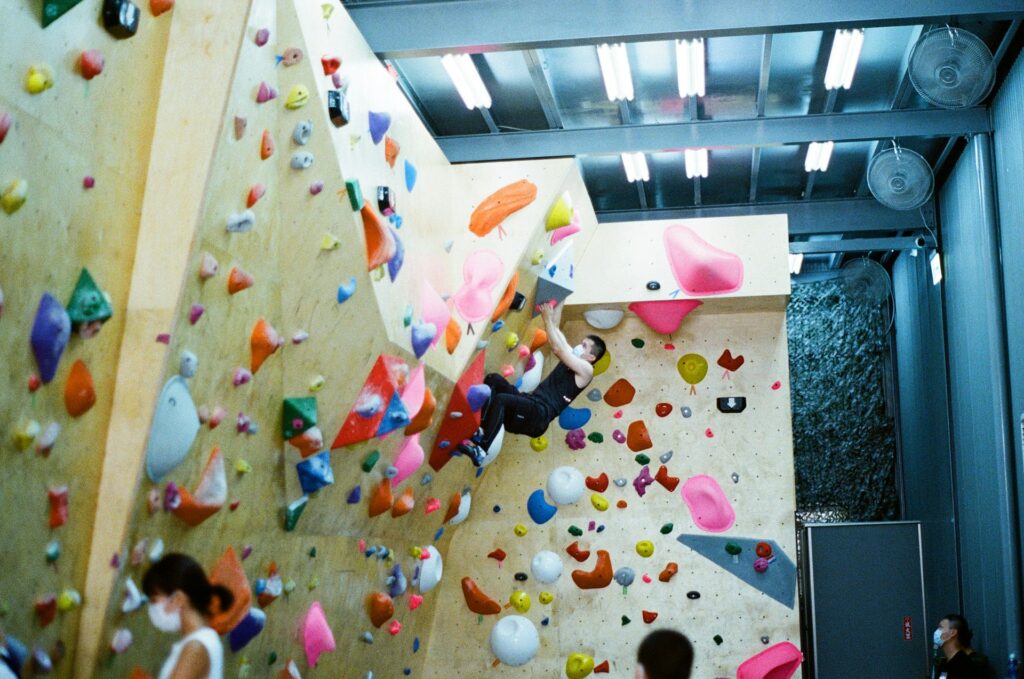
For climbers dreaming of conquering natural rock, the right indoor training facility serves as more than just a place to climb—it becomes a laboratory for developing the specific skills, strength, and mental resilience needed for outdoor adventures. The best gyms combine thoughtfully designed terrain, specialized equipment, structured progression programs, and communities of experienced outdoor climbers sharing knowledge.
By choosing a facility that aligns with your outdoor goals and consistently applying purposeful training, you can dramatically accelerate your development as an outdoor climber, even when weather, location, or time constraints limit your access to real rock. The indoor gym, when approached strategically, becomes not just a substitute for outdoor climbing but a powerful tool to make your outdoor experiences safer, more successful, and ultimately more rewarding.

